The mountains have a significant and special place in spirituality. It’s because mountains are one of the common settings in the Bible, apart from the seas and the rivers — many of the pivotal biblical scenes happened on top or near the mountains. That’s why mountains became, and remain, a special place where one could experience and “communicate’ with God.
Even people who are not particularly religious find themselves in awe by the majesty of His works and the surreal experience of being at the top of a mountain.
Here are some of the famous biblical mountains you should know:
 1. Mount Ararat
1. Mount Ararat
Mount Ararat is a chain of snow-capped dormant volcanoes located on the Turkish-Iranian border. It is traditionally known as the resting place of Noah’s ark, and thus it has been strongly associated with the Genesis flood.
The mountain is mentioned in Genesis 8, specifically Genesis 8:4 (King James Version): “And the ark rested in the seventh month, on the seventeenth day of the month, on the mountains of Ararat.”
People are still trying to find the exact spot on Mount Ararat where Noah’s ark landed, so, for now, it has remained a mystery. Nevertheless, tourists and pilgrims alike often ascend the mountain to try to locate the ark.
 2. Moriah
2. Moriah
Also known as Mt. Gerizim, Moriah is a mountain range in Jerusalem, although tradition insists that the name can also be referred to one specific type of mountain somewhere in that range.
Moriah is one of the significant mountains among Christians — it is mainly known as the mountain where Abraham went to sacrifice his son Isaac (Genesis 22:2). It is also the location where King Solomon built a glorious temple for the Lord (2 Chronicles 3:1)
 3. Mount Sinai
3. Mount Sinai
Perhaps the most famous Biblical mountain, Mount Sinai is located in the present-day South Sinai governorate, in the Sinai Peninsula in Egypt. It rises 2,285 meters 7,497 feet) above sea level and has the prominence of 332 meters (1,089 feet).
This mountain is revered by Christians, Jews, and Muslims alike. It is the place where Moses received the Ten Commandments from God (as told in the books of Exodus 20 and Deuteronomy 5).
 4. Mount Carmel
4. Mount Carmel
Mount Carmel is located on the mountain range of northern Israel, 17 kilometers north of Tel Aviv. This is where Elijah successfully proved to the prophets of Bal about the existence of God by asking the heavens to bring fire down to a dampened sacrifice (1 Kings 18: 17-46). With its connection with Elijah, it is also known as Mount St. Elias.
 5. Calvary or Golgotha
5. Calvary or Golgotha
Mount Calvary has always been associated with Jesus Christ’s last hours of His life and suffering, where He died on the cross for our sins (Mark 15:22). The word has been in our lexicon ever since, and it means an “ordeal” or a “test.”
Perhaps to further compound its association with death, Mount Calvary is also known as “Golgotha” or “Gagulta,” in which means “the place of (the) skull” in Aramaic — and you know that the skull and crossbones often symbolize death (and danger). But the origin of the name is unknown, and that leads to several theories:
- It used to be the place of public execution.
- It is shaped like a skull.
- It has been traditionally referred to as the location where Adam’s skull was buried by his son Shem after the Flood.
 6. Mount of Beatitudes
6. Mount of Beatitudes
The hill in northern Israel is popularly known as the Mount of Beatitudes, where Jesus held the Sermon of the Mount which includes the eight blessings known as the Beatitudes. (Matthew 5:1-12)
The Mount of Beatitudes is located between Capernaum and Ginosaur.
 7. Mount Olivet
7. Mount Olivet
Also known as the Mount of Olives, Mount Olivet is a name of the mountain ridge east of the capital city of Jerusalem. Once you’re on top of the ridge, you’ll enjoy unbeatable views of Jerusalem’s Old City and nearby areas.
Many of the Bible’s most important and crucial scenes happened on or near Mount Olivet. It is where Jesus spent his time praying, resting, or teaching His disciples. The Garden of Gethsemane, located at the foot of Mount Olivet, is famous as the site where Jesus spent his final night with His disciples before he was arrested. After He died on the cross, Jesus made His ascension there. (Acts 1:12)
It is not only in the New Testament where Mount Olivet is mentioned. There are scenes in the Old Testament that also occurred on Mount Olivet. King David ascended this mountain after his son rebelled against him (2 Samuel 15). While making his way up to the mountains, he wept.
King Solomon built pagan temples on Mount Olivet for his 700 wives (1 Kings 11:17) — the verse begins with “On a hill east of Jerusalem…” which refers to Mount Olivet.
Ezekiel had a vision of the “glory of God” departing from Jerusalem and landing on the “mountain east of it,” which again refers to Mount Olivet. (Ezekiel 11:23)
Zechariah prophesied the second coming of Christ. The prophet furthermore predicted that Christ would make a return to the Mount of Olives, where it would be divided into two mountains “from east to west.” (Zechariah 14:4)

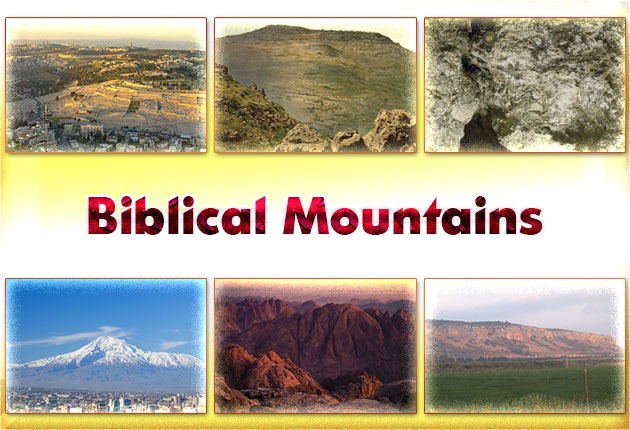
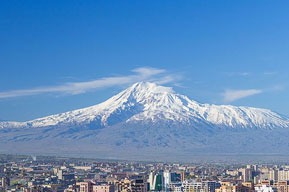 1. Mount Ararat
1. Mount Ararat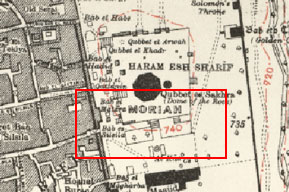 2. Moriah
2. Moriah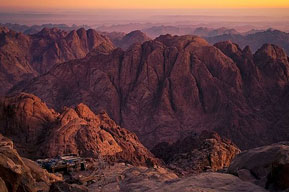 3. Mount Sinai
3. Mount Sinai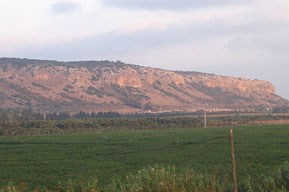 4. Mount Carmel
4. Mount Carmel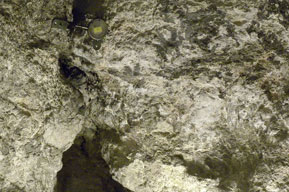 5. Calvary or Golgotha
5. Calvary or Golgotha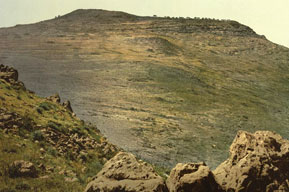 6. Mount of Beatitudes
6. Mount of Beatitudes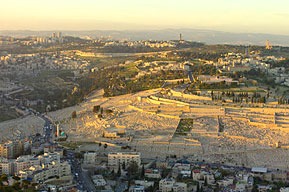 7. Mount Olivet
7. Mount Olivet